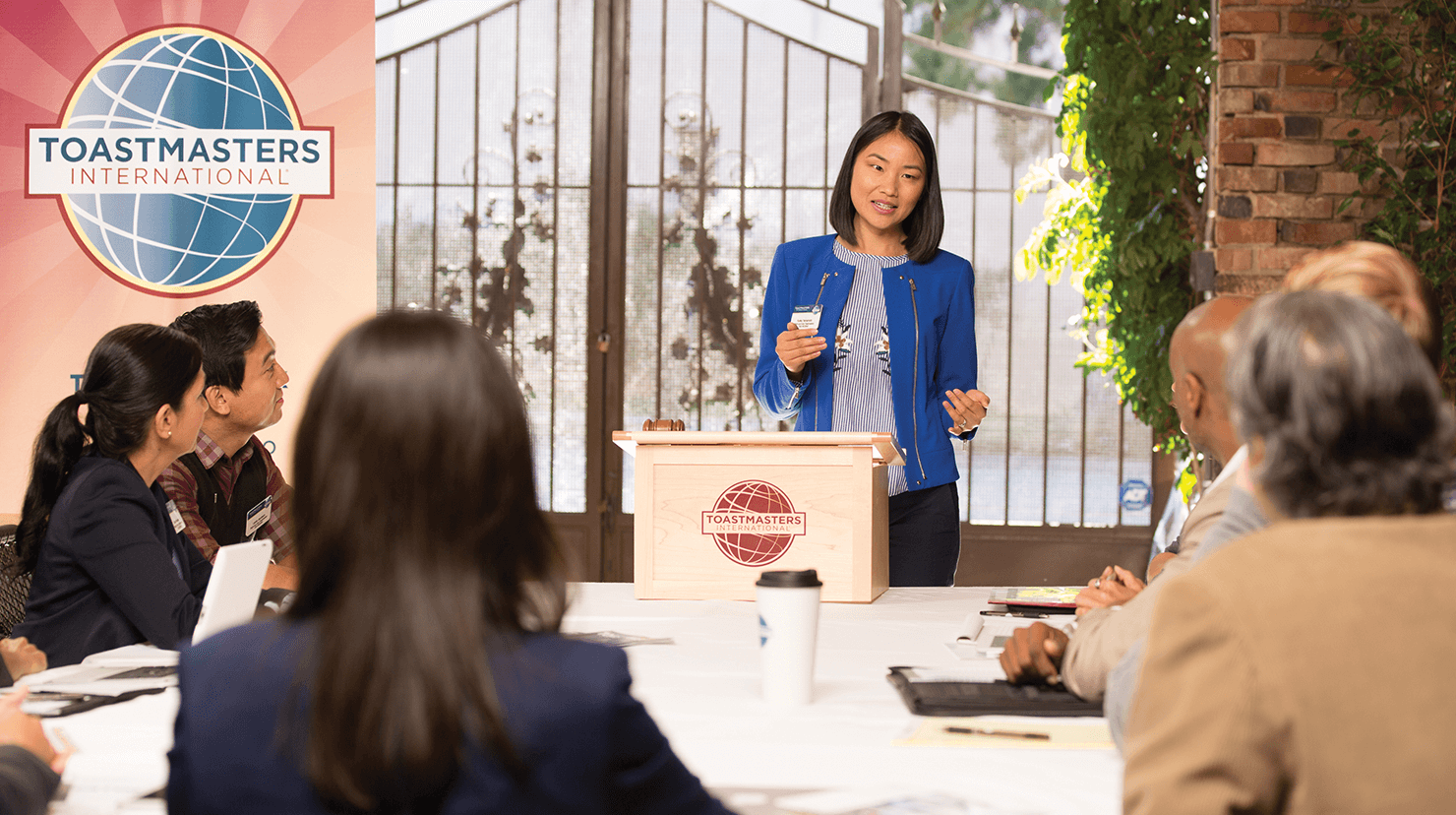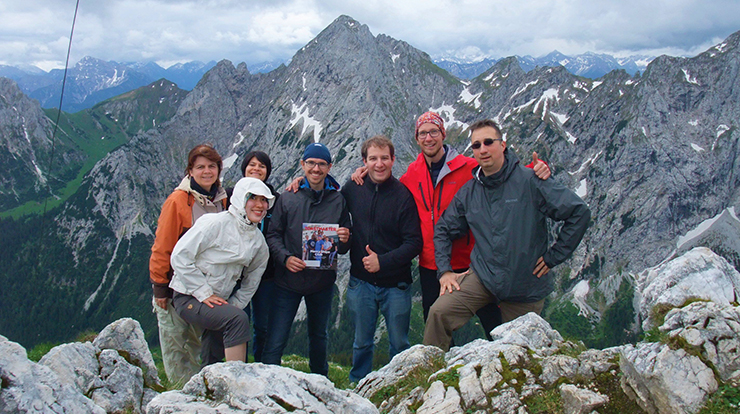Over time, many clubs become a bit stale, with members lapsing into a routine pattern each week. Sometimes it’s a result of the sameness of the room, identical meeting formats, or the absence of enough new members to infuse the club with new energy. Over the years I’ve watched clubs succumb to lethargy. Yet the remedy is as easy as a little dose of vitamin C—creativity.
The Leader Ship club in Lodz, Poland, provides a fun learning experience in a friendly atmosphere.
Administer this vitamin to your club whenever you feel you’re in a rut or want to do some team building. Past International Director Paula Tunison, DTM, puts it this way, “Toastmasters is like a love affair. Everything is exciting at first and then, if you’re not careful, it can become dull and routine. Changing your meetings helps to keep it exciting.”
Here are some ways to spice up meetings with changes of pace, fresh ideas, and a dose of fun to create a renewed vitality:
A different room layout.
Many times, we accept the room layout as a given: the placement of the lectern, chairs, and tables. Change it up by reversing the location of the lectern before the next meeting. If possible, put it at the opposite end and feel the difference. Other variations: If your lectern is at the narrow end of a long table, try placing it in front of the wide side. Or consider removing the table and holding the meeting in a circle or semi-circle, a chevron pattern (inverted-V shape), or some other configuration of chairs. Remember, environment informs experience. Add flowers, a scent, or some fun decorations for further effect. Create a new environment and the experience will surely feel fresh and exciting.
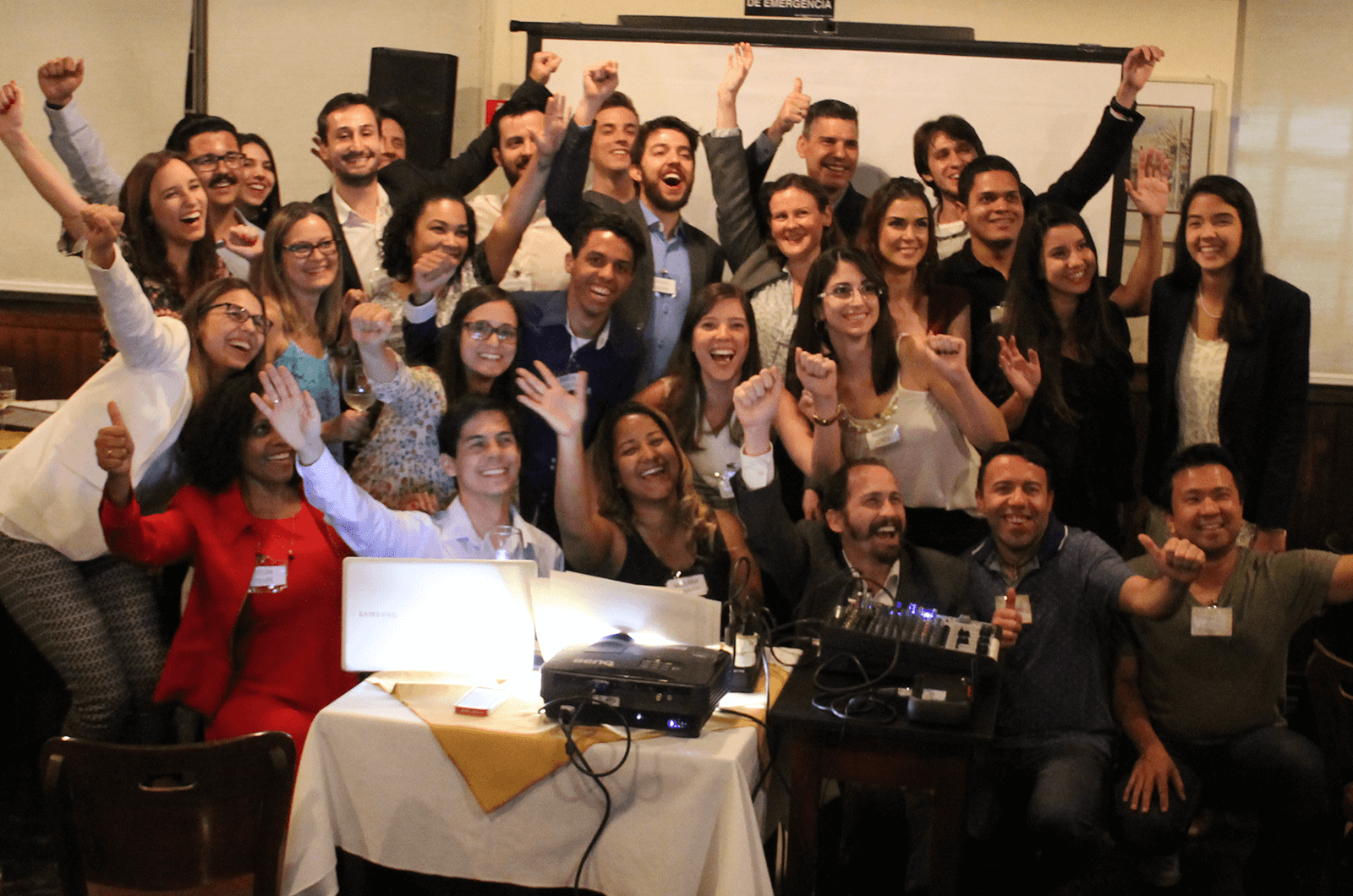 Campinas #1 Toastmasters, in Sao Paulo, Brazil, shared its charter party via Skype with the Minnesota Returned Peace Corps Volunteers club in the U.S.
Campinas #1 Toastmasters, in Sao Paulo, Brazil, shared its charter party via Skype with the Minnesota Returned Peace Corps Volunteers club in the U.S.
A joint meeting with another club.
Find one that meets nearby at the same time. You can host them for one meeting, and they can reciprocate another time. It’s exciting to entertain guests who already know the Toastmasters traditions. The extra people and energy from this joint meeting doubles your fun! For a truly different experience, schedule a Skype meeting with a club in another part of the country or the world. It will require some creative logistics and cooperation between clubs. For example, a Minnesota club with a connection to a club in Sao Paulo, Brazil, joined a lively charter Skype party for the new Brazilian club.
A grab-bag meeting.
A grab-bag meeting. Designate your next meeting as a grab-bag where, upon the arrival of members, all meeting roles are drawn from a bag filled with slips of paper. Use a fill-in-the-blanks agenda, or a flipchart or whiteboard where you write in the roles chosen from the bag. Any member may end up as Toastmaster, speaker or evaluator. The drama adds a layer of excitement as even the prepared speeches feel like Table Topics.
The theme’s the thing.
Turn a normal meeting into a special event! One club in the United States held an Academy Awards meeting where the Toastmaster wore a tuxedo, the Table Topics questions related to movies, and the winners gave acceptance speeches! Another club honored the American baseball season with a meeting in which each member assumed a baseball- related role: The Toastmaster became the manager, the General Evaluator became the head umpire, speakers became batters, and the Topicsmaster became the pitcher. Members fielded topics. You can do the same with football/soccer—the General Evaluator becomes the referee, the Topicsmaster becomes the goalkeeper, kicking ideas back to members, and the speakers become the offensive line. Add a cheering section!
Other themes may relate to topical holidays or current events of a local, regional, or national nature. Celebrate the Cherry Blossom Festival in Japan, Independence Day in your country or even a club, District, or company anniversary.
A reverse meeting.
Once a year, say on April 1 (“April Fool’s Day”) or January 31 (“Backwards Day!”), you begin with the closing thought, hear speech evaluations before the speeches and generally reverse the order of your entire meeting. Shaking up the order of meetings draws longtime members out of complacency and gives a fresh perspective on each segment.
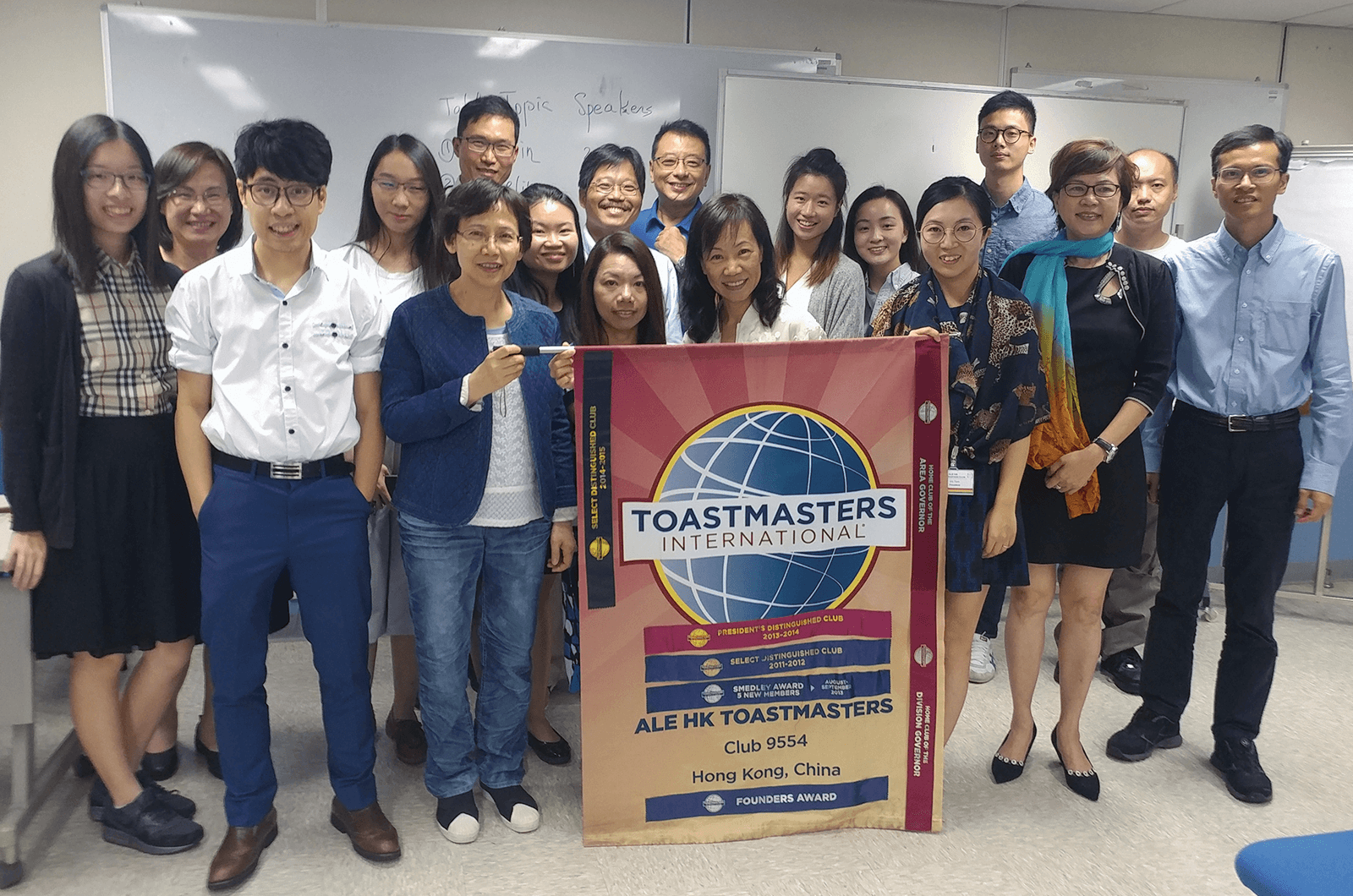 The ALE HK club in Hong Kong gave speeches in a dark room to remove visual cues and focus instead on vocal variety.
The ALE HK club in Hong Kong gave speeches in a dark room to remove visual cues and focus instead on vocal variety.
A costume party meeting.
People tend to be more relaxed when they’re dressed differently than usual, so a costume party presents a great opportunity to practice composure and professionalism even while wearing a mask or crazy outfit. Think about a celebratory time of year in your country that you could tie into—Halloween, Carnival, Day of the Dead, the Lunar New Year. Just be sure to clearly explain to any guests what you are doing and make sure they feel included. Maybe bring along some extra adornments in case they want to participate!
Alternately, try wearing “uniforms” during Table Topics. Members of the corporate club KT Talkers in Milpitas, California, held a Table Topics session inside their company’s semiconductor cleanroom, a room almost entirely devoid of airborne particles. They dressed in their sanitized “bunny suits,” which included a head cover, face mask, white suit, blue gloves, and boots. If you’re in an industry with uniform regulations, see if wearing different types of clothing causes you to talk or behave differently.
A time machine.
If your club is ambitious and likes a challenge, tie your costumes or themes to a historical period. Encourage members to dress like a past generation: platform boots and silk shirts with wide lapels for the ’70s, bobby socks, and leather jackets for the ’50s, the gangster suits or flapper dresses for the ’20s. You’ll find a new energy comes with such wardrobes. Or go back further: the Renaissance era, Roman or Greek empires, or even the Stone Age. Perhaps you’d rather fast-forward to the year 2058 or 3008? When the time comes, come in character.
In addition to dressing for a particular epoch, try using bits of related language, phrases, and speech topics. Methinks you speaketh the King’s English fits in your Elizabethan era. For the Roaring ‘20s, work in a few quotes from F. Scott Fitzgerald or Virginia Woolf. And your Table Topics and speeches can relate to the themes of the era as well. Again, explain to any guests what you are doing and why—in case they think they need to dress like Antony or Cleopatra next time.
A progressive story.
The Topicsmaster begins the fun, and it’s continued by all the members. Collectively, you tell a story designated by the Topicsmaster. This requires listening skills, creativity, and quick thinking to complete. Each member contributes a sentence or two in the co-creation of a new story.
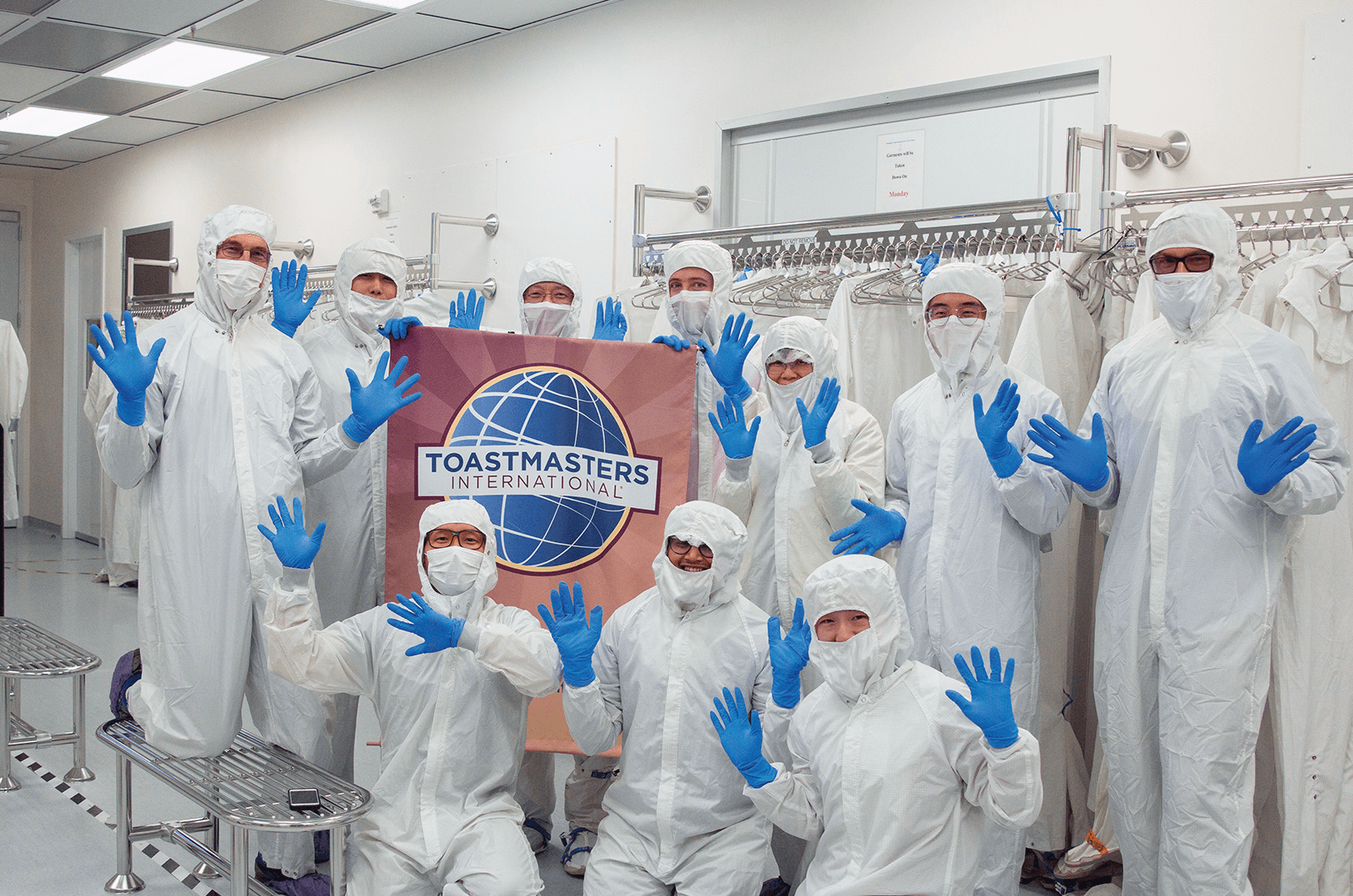 The KT Talkers club members, in Milpitis, California, U.S., donned “bunny suits” to meet in their company’s semiconductor clean room.
The KT Talkers club members, in Milpitis, California, U.S., donned “bunny suits” to meet in their company’s semiconductor clean room.
A debate.
Your Table Topics can have two participants arguing alternate sides of an issue. Or plan a debate with numerous “candidates” for a fictitious election to involve as many members as possible. Another alternative: You can ask Table Topics respondents to argue both sides of an issue. To further develop debate skills, allow a Table Topics responder to rebut the previous participant’s topic.
Debates build both listening skills and persuasive skills, and also challenge listeners to consider a different point of view and think more deeply about a topic.
A television newscast.
Bring journalism to your club. Your Sergeant at Arms can give the countdown until you go live and also be the “voice-over” that introduces the newscast. Your Toastmaster of the Day is the anchor, with the Topicsmaster and the General Evaluator as your sports and weather co-anchors. Speakers become field correspondents with reports. You can even turn some roles into commercials.
A speech marathon.
Help your members earn their educational awards as you dedicate an entire meeting to prepared speeches. For clubs with a lot of members and the constraints of a one-hour meeting time, this periodic pumped-up housekeeping event helps more members speak and shortens the wait time between speeches. It’s educational for audience members to see multiple speeches in rapid succession. These popular events can be staged at a regular club meeting or scheduled in addition to your regular meeting time and place.
Tap into your senses and conduct your meeting with the lights off.
Members of the ALE HK club in Hong Kong used this experience as a way to practice vocal variety. Without seeing body language and facial expressions, listeners are better able to home in on speaking pitch, pace, volume, and vocal pauses.
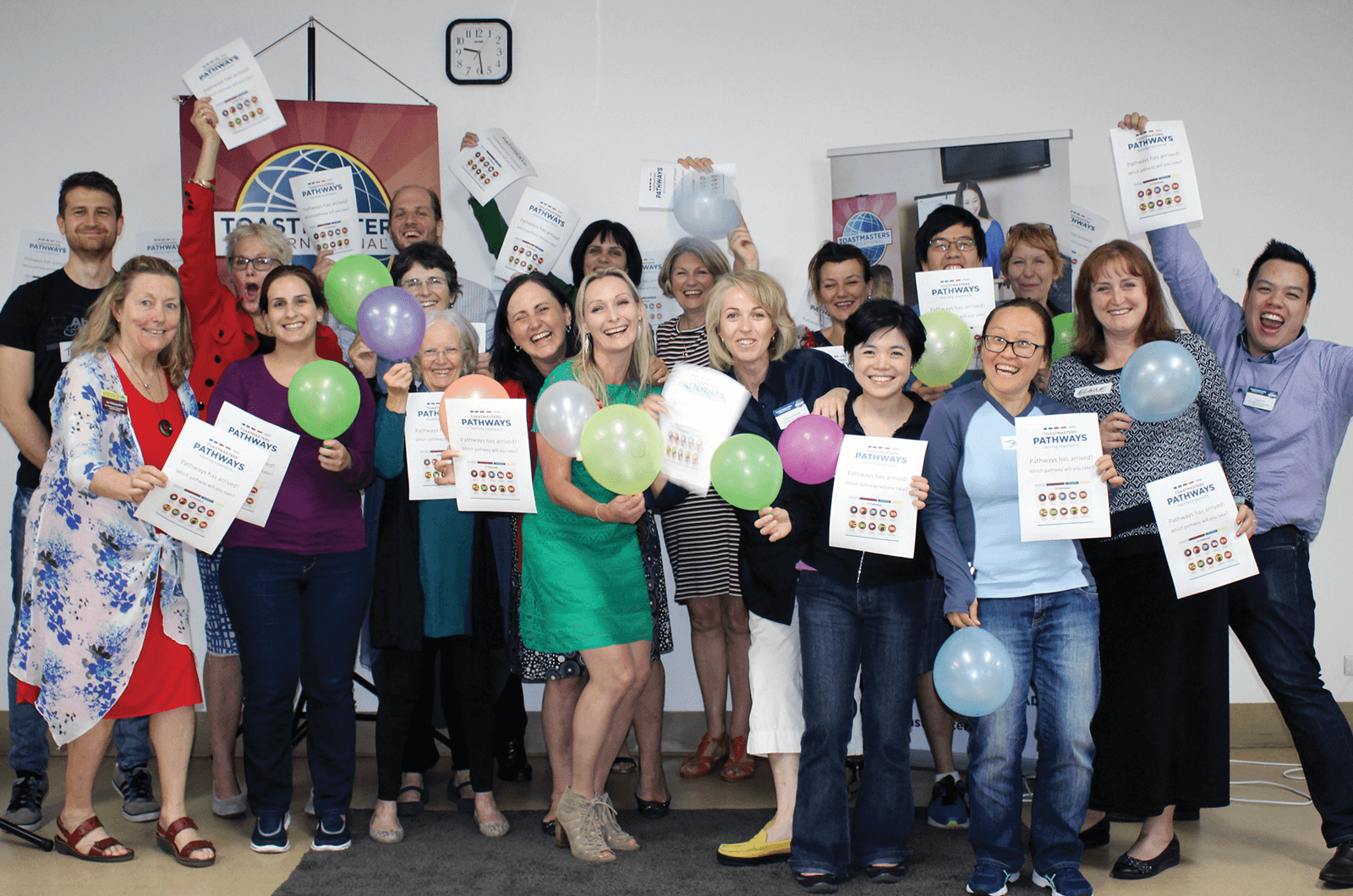 Members of the Port Melbourne club in Melbourne, Australia, celebrate the launch of Pathways in Region 12.
Members of the Port Melbourne club in Melbourne, Australia, celebrate the launch of Pathways in Region 12.
Participants loved the creativity of the session and how the darkness forced them to think outside the box when figuring out how to give timing signals. Members had to focus on taking mental rather than written notes and evaluators had to memorize their statements.
Tall tales are terrific.
Once in a blue moon, or on April 1 (“April Fool’s Day”) or April 4 (“Tell A Lie Day”), you can dedicate a meeting to embellishment, aggrandizement, and bald-faced lies. Everyone can get into the act. Your speech introductions, speech theme, Table Topics, and more can play fast and loose with the truth. Make outlandish claims and issue representations of gigantic proportions for comedic effect. Then, just to confuse your audience, throw a complete truth into the middle and see if they detect it! Make Pinocchio proud.
During Table Topics, play Truth or Lie. For some, this is easy. For others, it might be a challenge. Vote after each topic response on whether it was the truth or a lie.
If you’re troubled by fostering lies in a Toastmasters meeting, rest assured that each April 30 you can honor Honesty Day with a meeting dedicated to truth—which is often stranger than fiction!
Go Hollywood!
Themes abound from the world of motion pictures. Whether you take your inspiration from Hollywood, Bollywood, or the movies of Hong Kong, you’ll find wonderful ideas from films and TV shows as diverse as Game of Thrones, the Harry Potter series, or Downton Abbey.
Whether you employ these or other ideas to spruce up your meetings, that extra shot of vitamin C will breathe new life into proceedings. While you never want to eschew the educational value of meetings, such variations on our traditional formats will add a new dimension to your Toastmasters training and keep everyone fresh. Any time you apply creativity to your meetings, the results will yield fun, energy, and new perspectives. Ready . . . set . . . create!
Members of the Ingleburn Toastmasters club in New South Wales, Australia, show how their club wows.
It's important to have fun in your club, but it also helps to evaluate your club's strengths and weaknesses from time to time. Click here to find out more and to download the Club Quality Checklist.
Craig Harrison, DTM a Past District Director, is now a professional speaker based in the San Francisco Bay Area. He cites joining Toastmasters in 1992 as one of the best decisions in his career and life. Email him at craig@expressionsofexcellence.com



 Previous
Previous
 Previous Article
Previous Article
